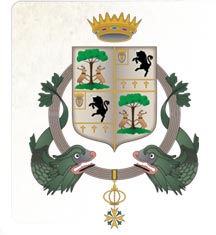
La Storia dell'Eremo
Around the year 1000, Saint Romualdo, a Benedictine monk and the founder of the Eremo di Camaldoli spiritual retreat, promoted a very important monastic reform which involved the province of Arezzo. The Saint conceived a reformation of Monasticism that was aimed at returning the Benedictine Order to its original values of spirituality, poverty and isolation. The changes introduced by Romualdo and the hermetic life that featured isolation, fasting and prayers were the principal modifications that were made to monastic life. In an age when moral and civil values were decaying, also in the area surrounding Cortona, Benedictine Parishes became the only hope and shelter for the masses of people who were trying to reorganize society. The most important constructions in Cortona began in the 11th, 12th and 13th centuries: the church of Saint Francis, the Eremo de Le Celle, the church of Saint Basil, the church of Saint Dominic, the church of Saint Augustine and Saint Claire. During this period, the Benedictines saved the local culture and the history of the town along with its ancient treasures, and in doing so they also contributed to making religion flourish in Cortona. Already around year 1000 the Benedictines had a strong influence in the area of Cortona: they founded the Abbey of Farneta as well as the Abbey of Fieri (also known as Abbey of Monte Maggio) where our country house is now located today. The small church is the only part of the original building which has survived the time and it is still visible few steps away from our country house.
This spiritual retreat already existed in the year 1113 and it was apparently named after the noble Zaini family from Cortona, who were once referred to as "Dei Fieri" and later
"Fierli" because of their courage and pride. In the same year this family was granted the Camaldolese lands and houses on the mountainside of Sant'Egidio.
The Abbey of Fieri, which was directly connected to the Abbey of Camaldoli, was an important part of life in Cortona and also witnessed the bloody events of the war between
Guglielmo (1219-1289), Bishop of Arezzo, and Cortona, which began in 1258 – when Destructio et desaltio fit Cortone – and came to an end on the 25th of April
1261, when Cortona had its revenge. Over the next few centuries, the Fieri spiritual retreat experienced alternating fortunes: first the monks abandoned the area and went back
to Camaldoli. The retreat was left in a state of semi-abandon and became an object of dispute between Camaldoli and the Church of Cortona. This was the status quo until the 18th
century when the Abbey of Sant'Egidio of Fieri ceased its activity completely and became part of the Villa belonging to the Farina family (who were the ancestors of the present
owners).
Just a few steps away from the agriturismo there is monument called "Croce di Sant'Egidio" and one can read what was written in 1851 in memory of the ancient origins of this place: "Here lies the age-old Camaldolese monks possession, where – during the time of Saint Romualdo - they founded the first spiritual retreat, where life was divided between farming and forestry. This place survived the ecclesiastical suppression ordered by Napoleon to his dignitaries and, from 1859 to 1860, thanks to the Marquis Filippo Antonio Gualtiero of Orvieto, the property became an open house for the hopes of Italy..."
Source: L'eremo di Sant’Egidio a Cortona, Don Bruno Frescucci, Editrice Grafica L'Etruria, 1987.
